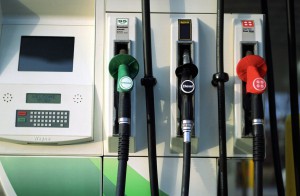
The U.S. average price for a gallon of gas has dropped below $2 and is expected to continue sliding into next year.
The price of gasoline continues to slide as the Christmas holiday approaches and are poised to go even lower as the global price of crude oil continues to fall, setting the stage for further decline in pump prices.
U.S. average gas prices dropped below $2 per gallon for the first time since March 25, 2009, during the depths of the great recession, according to AAA’s survey of gasoline prices nationwide. The national average price of gas had dropped to $1.998 per gallon.
AAA estimates that cheaper gas prices have saved Americans more than $115 billion on gasoline so far this year, which works out to more than $550 per licensed driver. Marshall Doney, AAA’s president and CEO, noted, “The lowest gas prices in nearly seven years are a holiday gift that few consumers could have imagined when gasoline was $4 a gallon.”
More than two-thirds of U.S. stations already are selling gas under $2 per gallon, and drivers can find at least one station selling gas for less than that price in 47 states. The most common price nationwide is $1.899 per gallon. The national average price of gas is about 41 cents less than a year ago.
(Holiday travel records expected to fall due to cheap gas. For more, Click Here.)
Gas prices have dropped because there is more than enough oil and gasoline supplies around the world to meet current demand. In addition, gas prices generally fall through early winter because people drive and use less fuel this time of year.
“We have witnessed a dramatic shift in gas prices that has saved families hundreds of dollars so far this year,” continued Doney. “The best news of all is that there is room for prices to drop even more in the coming weeks.”
Gas prices already are much cheaper than $2 per gallon in most parts of the country. The lowest 1% of U.S. stations are selling gas for an average of $1.59 per gallon, and more than 13,000 stations are selling gas for less than $1.75 per gallon. The states with the cheapest averages include: Missouri at $1.77, Oklahoma at $1.78, South Carolina at $1.78, Tennessee at $1.79 and Kansas at $1.79.
Average gas prices last fell below $2 per gallon for a brief span between November 2008 and March 2009 during the height of the Great Recession, as weak global demand and a significant decline in driving helped push prices downwards. Prior to that four-month period, average gas prices were last below $2 per gallon in early March 2005, meaning it has been more than a decade since gas prices were below $2 per gallon when the economy was not in recession.
(Click Here for details about the expected rise in traffic fatalities this holiday season.)
The national average price of gas has remained more than $2 per gallon for 2,462 consecutive days. During this 81-month span, gas prices averaged $3.11 per gallon and reached as high as $3.98 on May 5, 2011. The highest national average ever was $4.11 per gallon on July 17, 2008.
Based on normal seasonal trends, gas prices likely will remain low through January, and could drop even further if the cost of crude oil remains weak. By late winter, gas prices may rise 50 cents per gallon or more as refineries conduct maintenance in advance of the busy summer driving season.
The maintenance reduces fuel production and typically leads to higher gas prices. Despite the expected seasonal increase, the national average price of gas may not rise above $3 per gallon in 2016 because oil should remain abundant and relatively inexpensive.
Domestic supplies of commercial crude oil are about 29% higher than a year ago, according to the Energy Information Administration, while oil prices are about $70 per barrel cheaper than in the summer of 2014. Oil is the primary cost associated with making gasoline, and every $10 decline in the cost of oil can reduce gas prices by nearly 25 cents per gallon.
(To see more about why accidents are on the rise after a decade of declines, Click Here.)
Americans are on track this year to drive a record number of miles, largely due to lower gas prices and a stronger economy, based on estimates by the Federal Highway Administration. Through October, which is the most recent data available, Americans have driven more than 2.63 trillion miles for the year, which is a 3.4% increase over the same period in 2014.

Has anyone noticed the spread between regular and premium fuel prices is higher than normal by a considerable amount in some areas?
If figures, right on time. This totally explains why petrol prices in my area jumped 30 – 40 cents Monday – Tuesday. Thanks for the “Scrooging”.
Merry X-Mas.
It’s all just a game for OPEC who lowered the prices to drive the shale oil producers out. You can be sure the price will be back in the $3+/gal. range soon.